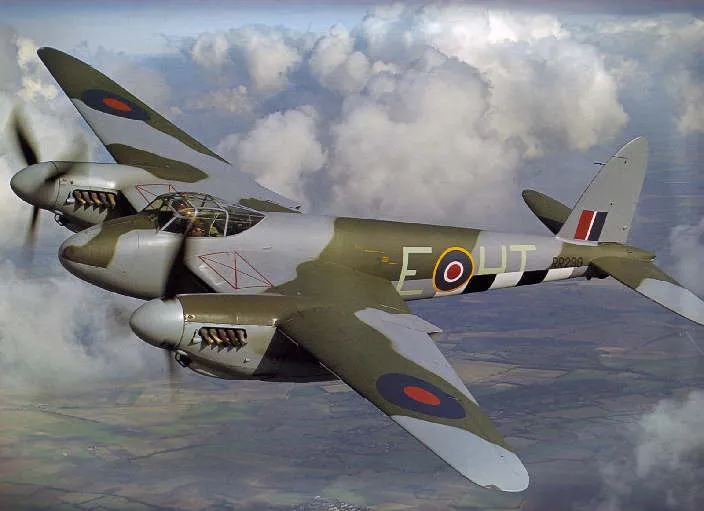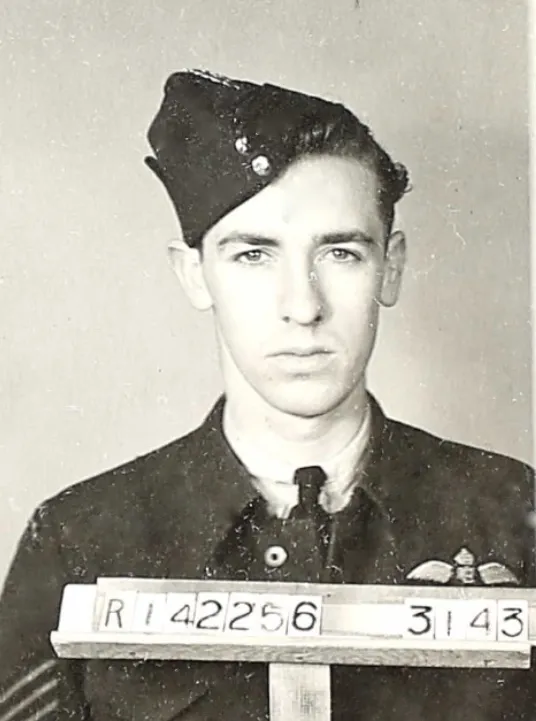Vinnell, Henry Victor Alexander (Flight Lieutenant)
Killed in Action 1944-November-27


Birth Date: 1922
Born:
Parents: Son of Henry Victor and Elizabeth Ann Vinnell, of Camberwell, London
Spouse:
Home:
Enlistment:
Enlistment Date: unkown date
Service
RAFVR
Unit
192 (RCM) Sqn- Squadron (RAF)
Dare to Discover
Base
RAF Foulsham
Rank
Flight Lieutenant
Position
Navigator
Service Numbers
123505
Mission
Mosquito B.Mk. IV DK292
Counter Measures Munich Germany 1944-November-27 to 1944-November-27
192 (RCM) Sqn (RAF) RAF Foulsham
192 Squadron RAF (Dare to discover) RAF Foulsham. Mosquito IV aircraft DK 292 DT-J was tasked with a radio-counter measure, bomber-support role for an operation against targets in Munich, Germany. Pilot, Flying Officer Jack Glen Millan Fisher (RCAF) attempted a crash-landing at Vassonville on a beach north of Le Havre, Seine-Maritime, Normandy, France but struck a mine and exploded. Both Fisher and his navigator, Flight Lieutenant Henry Victor Alexander Vinnell (RAFVR) were killed in action. Any recovery attempt would have been hazardous due to additional mines on the beach. The cause of the beach landing was never determined because the aircraft wreckage and crew remains were later washed out to sea and lost. Neither crew member have a known grave and both are commemorated on the Runnymede Memorial
![]() Royal Air Force Serial and Image Database
Royal Air Force Serial and Image Database
This aircraft, then with 105 Squadron RAF, was used 1942-08-05 on the first Mosquito trial flight for a high-speed transport service operated by British Overseas Airways Corporation (BOAC) between Leuchars, Scotland and Bromma in neutral Sweden from 1942-12-15 to 1945-05-17. This service was referred to as the "Leuchars-Brommma Service" or the "Ball-Bearing Run", transporting high-value cargoes from war materials such as ball bearings to important people such as nuclear physicist Niels Bohr
Mosquito serial: DK292

The de Havilland DH.98 Mosquito was a British twin-engine shoulder-winged multi-role combat aircraft, introduced during the Second World War. It was one of few operational front-line aircraft of the era whose frame was constructed almost entirely of wood. Nicknamed The Wooden Wonder, it was affectionately as the "Mossie" to its crews. The total number of DH98 Mosquito aircraft built was 7,781, the type serving with the main Allied air forces, including both the United States and Russia.
When Mosquito production began in 1941 it was the fastest propeller driven operational aircraft in the world. The first variant was an unarmed, high-speed, high-altitude photo-reconnaissance aircraft. Originally conceived as an unarmed fast bomber, the Mosquito's use evolved during the war into many roles including low to medium-altitude daytime tactical bomber, high-altitude night bomber, pathfinder, day or night fighter, fighter-bomber, intruder, and maritime strike aircraft. It was also used by the British Overseas Airways Corporation (BOAC) as a fast transport to carry small high-value cargoes to, and from, neutral countries, through enemy-controlled airspace. The crew of two, pilot and navigator, sat side by side, but a single passenger could ride in the aircraft's bomb bay when necessary.
The Mosquito FB Mk. VI was often flown in special raids, such as Operation Jericho, an attack on Amiens Prison in early 1944, and precision attacks against military intelligence, security and police facilities (such as Gestapo headquarters). On the 10th anniversary of the Nazi' seizure of power in 1943, a morning Mosquito attack knocked out the main Berlin broadcasting station while Hermann Goering was speaking, putting his speech off the air. Goering later said: "It makes me furious when I see the Mosquito. I turn green and yellow with envy. There is nothing the British do not have. They have the geniuses and we have the nincompoops."
The Mosquito flew with the RCAF and other air forces in the European, Mediterranean and Italian theatres. After the end of the Second World War Spartan Air Services flew 10 ex-RAF Mosquitoes, mostly B.35's plus one of only six PR.35's built, for high-altitude photographic survey work in Canada. There are approximately 30 non-flying Mosquitos around the world with five airworthy examples, four in the United States, and one in Canada. Harold Skaarup web page and Wikipedia
![]() BAE Systems (formerly De Havilland)
BAE Systems (formerly De Havilland)

